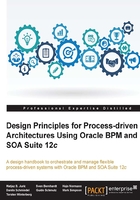
Why we need a new methodology for Game Enterprise BPM
Now, Game Enterprise BPM needs to be played everywhere. This implies that Game Silo BPM needs to diminish, meaning it needs to be replaced, gradually, through managed evolution, league by league, aiming for excellence at Champions League.
We can't play Game Enterprise BPM with the same culture of ad hoc, joyful creativity, which we find in Game Silo BPM. We can't just approach our colleague; let's call him Ingo Maier, who we know has drawn the process model for a process we are interested in. We can't just walk over to the other desk to him, asking him about the meaning of an unclear section in the process. That is because in Game Enterprise BPM, Ingo Maier, as a person whom we know as part of our team Silo, does not exist anymore.
We deal with process models, with SOA services, with a language defined somewhere else, in another department. This is what makes it so hard to move up in BPM leagues.
Hiding behind the buzz term "agile" does not help. In order to raise BPM maturity up, when we move from Game Silo BPM to Game Enterprise BPM, the organization needs to establish a set of standards, guidelines, tools, and modes of operations that allow playing and succeeding at Champions League. Additionally, we have to define the modes of operations and the broad steps that lead to a desired state. This formalization of collaboration in teams should be described, agreed on, and lived as our BPM methodology. The methodology thrives for a team in which each player contributes to one coherent game along well-defined phases.